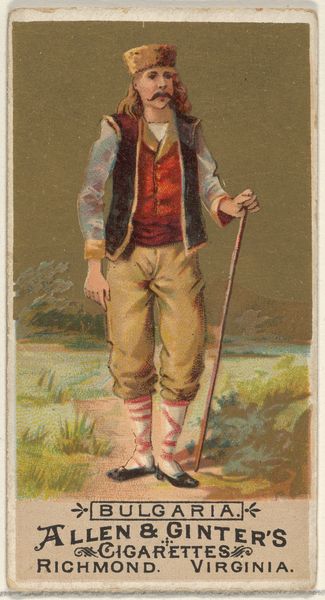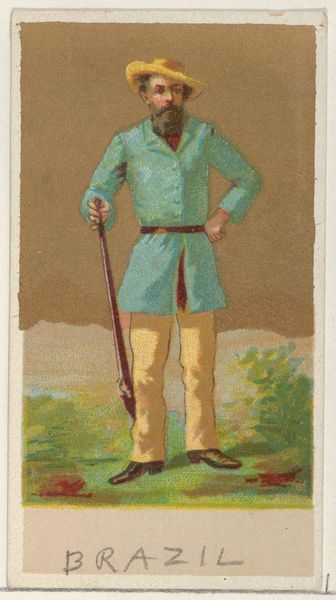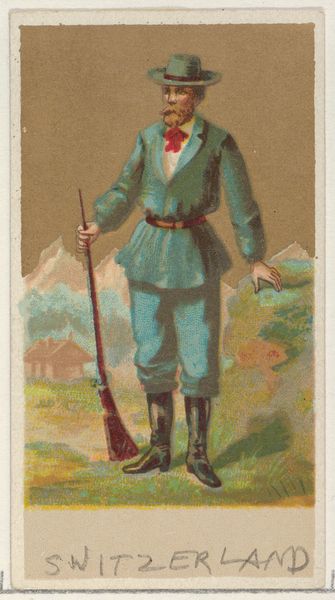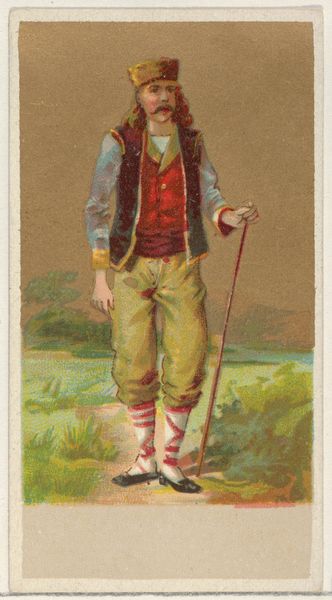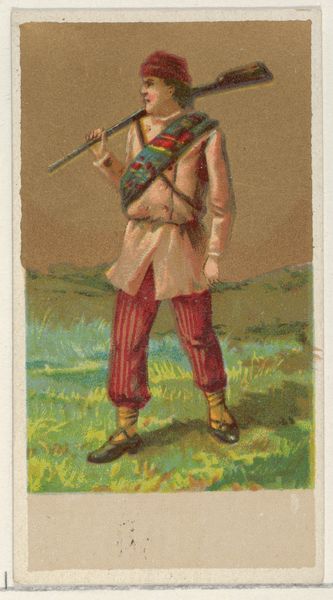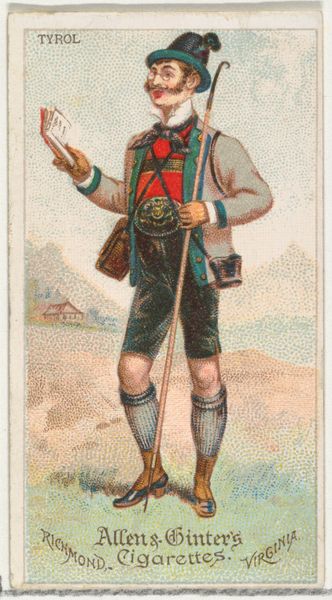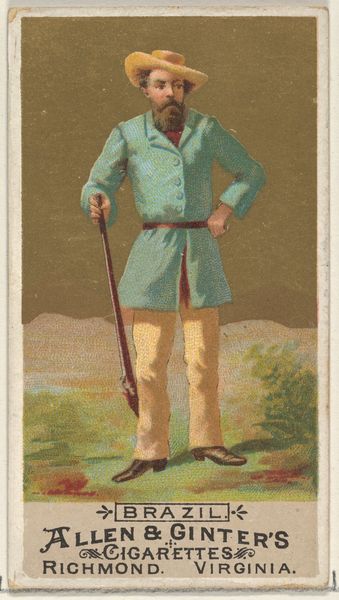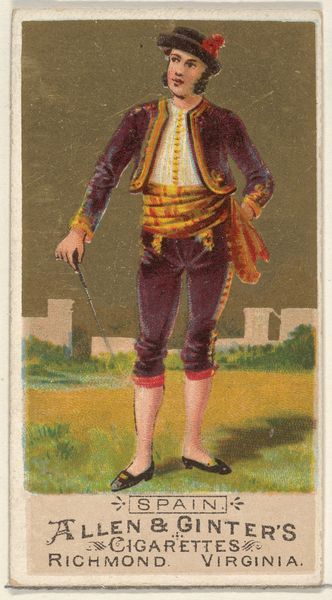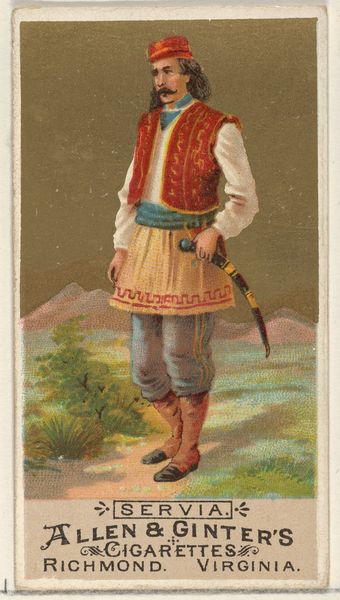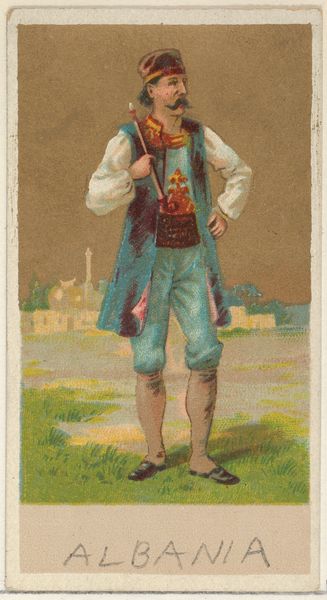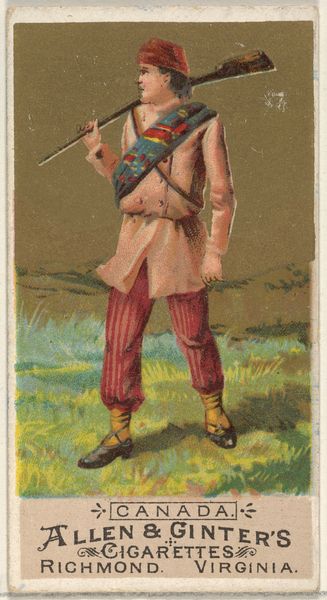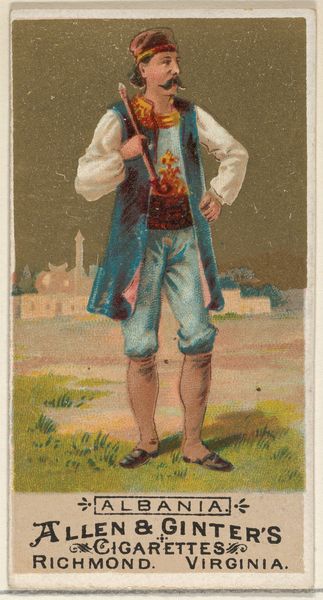
South Africa (Boer), from the Natives in Costume series (N16) for Allen & Ginter Cigarettes Brands 1886
0:00
0:00
drawing, coloured-pencil, print
#
portrait
#
drawing
#
coloured-pencil
# print
#
caricature
#
caricature
#
coloured pencil
#
folk-art
#
orientalism
#
genre-painting
Dimensions: Sheet: 2 3/4 x 1 1/2 in. (7 x 3.8 cm)
Copyright: Public Domain
Curator: Let’s turn our attention to a piece from 1886, titled "South Africa (Boer)," part of the "Natives in Costume" series by Allen & Ginter Cigarettes. Editor: First thought? This image has such a self-conscious "frontier" vibe, like a Wild West character who wandered way, way off course. Curator: It’s fascinating as an example of commercial art, mass-produced as a cigarette card insert. Consider the materials: colored pencil and printmaking, inexpensive and readily available, creating accessibility in distribution, yet creating highly problematic associations between consumerism and cultural representation. Editor: Right, but still, I can't shake off this character. His posture is just a tad too stiff, the palette a little too uniform, especially with that ochre backdrop—and everything, even the background, seems strangely preoccupied with making the man in red stand out in a performative assertion of rugged masculinity. Curator: Absolutely, consider how such images operated within the culture of 19th-century Orientalism, romanticizing the "exotic" while subtly reinforcing imperial narratives and systems of oppression by turning complex people into generalized "types." The printing process itself, geared for mass consumption, inevitably flattens nuanced portrayals into caricatures. Editor: True, it definitely hints at some complicated dynamics there. This piece does feel like less of a genuine attempt at capturing a Boer individual, and more of a curated, consumer-friendly construction made by a non-native in the production mills of the United States. Almost like an advertisement playing dress-up with history. Curator: Precisely. We are really looking into the relationship between art, commodification, and colonial ideology at work here. The production values say a lot about how Western perceptions were formed and reinforced by mass media, even back then. Editor: It's a weirdly telling artifact; simultaneously innocent-seeming yet so heavy with implications. A humble cigarette card opens into a view of entire worlds—of culture, economics, and power—with just a glance.
Comments
No comments
Be the first to comment and join the conversation on the ultimate creative platform.
